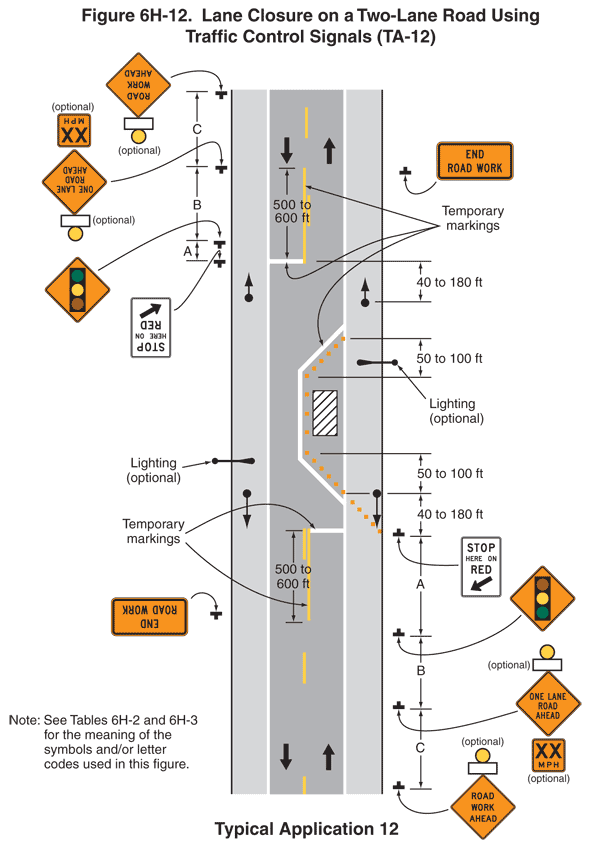 |
PDF Version, 1.3MB
You will need the Adobe Acrobat Reader to view the PDF on this page.
June 24, 2010
Mr. Hari Kalla
MUTCD Team Leader
Federal Highway Administration, Office of Operations
1200 New Jersey Ave, SE
Room E84-316
Washington, District of Columbia 20590
Subject: Interpretation MUTCD Temporary Traffic Control for Figure 6H-12 (Typical Application 12)
Dear Mr. Kalla
We are requesting an interpretation that would permit a Pilot Car to be used as an Option in Typical Application 12, Lane Closure on a Two-Lane Road Using Traffic Control Signals to expand the safety of the motoring public.
The Portable Traffic System, PTS 2000, has the ability to allow the PILOT CAR driver to control the actuation of the traffic signal and the amount of GREEN time allocated to a movement to effectively and safely move traffic through a WORK ZONE no matter what the distance. The method is called a PILOT CAR MODULE.
The duration of the green interval is controlled by the operator of the Pilot Car and is predicted on the amount of queued traffic. The yellow clearance interval is established in accordance with standards provided in Section 4D-26. Travel speed through the work zone, and clearance time, is controlled by the speed of the Pilot Car, including any delays that might be encountered. When the Pilot Car reaches the end of the one-lane section and the traffic waiting in the opposite direction, it pulls off to the side of the road to allow the traffic that was just led through the Work Zone to pass. The Pilot Car then turns around to get in front of the opposing traffic for the return trip, setting the duration of upcoming green interval based again on the amount of queued traffic. All required timing input is done with the Pilot Car Module from within the Pilot Car. The method has been used in many Western States for more than ten years with no incidents and great success
Portable Traffic Signals are a more positive traffic control as they can be seen at a greater distance causing the motorist to be more responsive and remove the FLAGGER from harms way.
As noted in the Notes for Figure 6H-12 Support: paragraph #10, Temporary Signals are preferable to flaggers…, with this in mind and the success of Portable Traffic Signals proven over the years as a positive control, we request that Pilot Car operations be included as an Option in Typical Application 12.
Should additional information be required please advise.
Sincerely
Robert J. Burns
John Thomas, Inc. | 1560 Lovett Drive | Dixon, Illinois 61021 | Tel: 888-447-7263 | Fax: 888-335-3948 | www.crashcushions.com

Standard:
Guidance:
Option:
Support:
|
United States Department of Transportation - Federal Highway Administration |
||